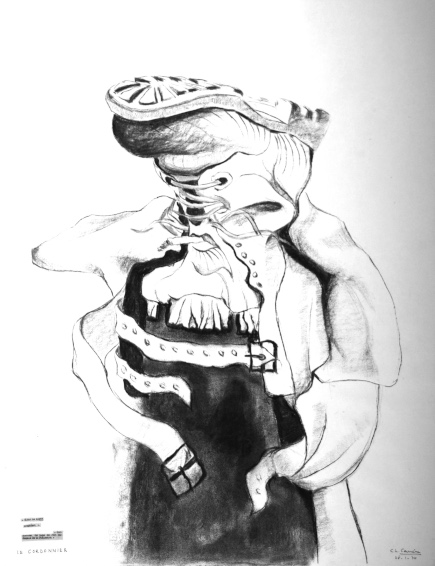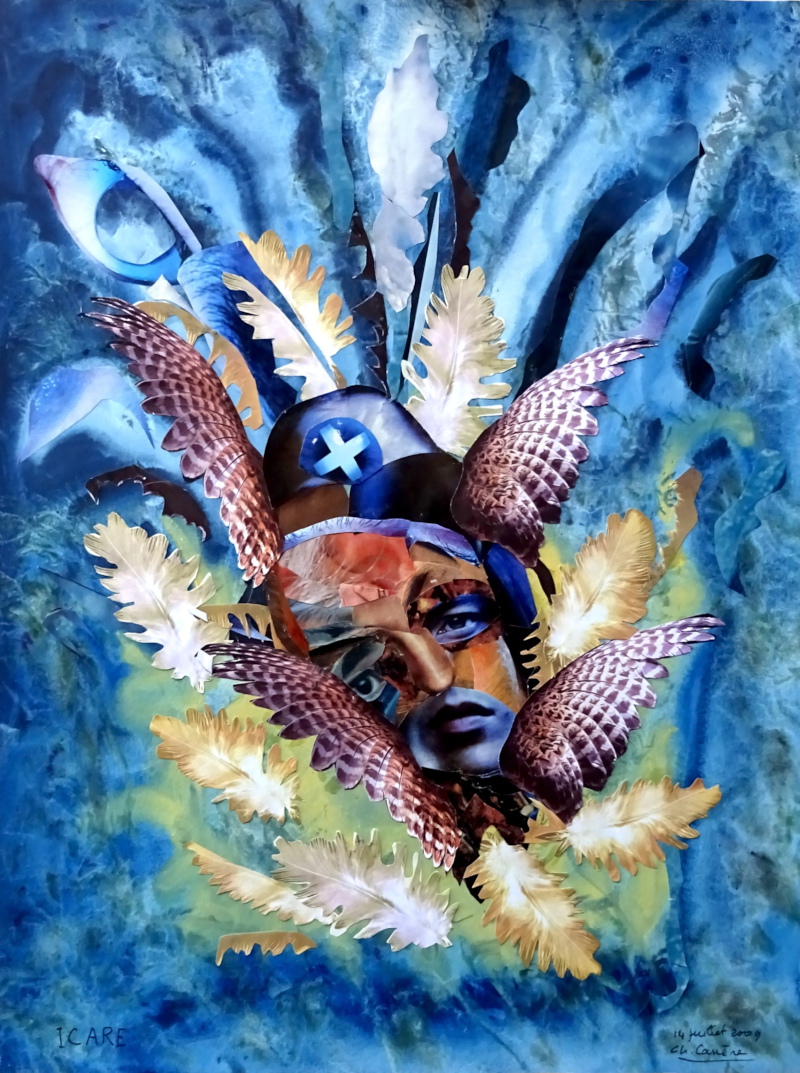
The multi-faceted artist
When his day’s work is done, the Master stained-glass artist and mosaicist begins his “second life” as a draughtsman, painter and artist in perpetual research. He leaves his ground floor workshop to move upstairs to his “refuge”.

photo©CharlesCarrère
The artist draws, paints and does constant research. For him, this is like a liberation from the constraining norms of his work day. Here everything is allowed. His caustic humour is reflected in his work. His references are specific: literature, history, operas, art, poetry, theatre etc. The theme decides the technique chosen but Charles Carrère also plays with different techniques to translate the same theme.
Some of his works are painted with realism. Landscapes or still lifes.
But a large majority of his works are surrealist. For example, he paints imaginary portraits and likes to sit facing the wall of his studio on which he exhibits them
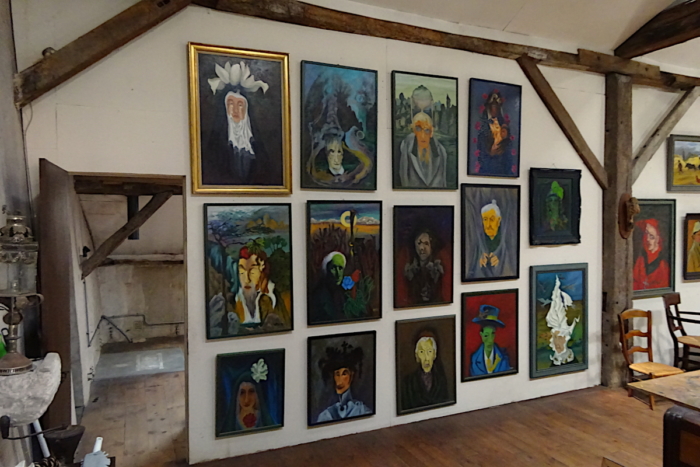
Photo©JanieC
The Britany widow painted by Charles Carrère wears a Bigouden headdress. This headdress is shaped like the sailboat in which her sailor husband died at sea. It is a tribute to the sailors who died at sea and to their widows.
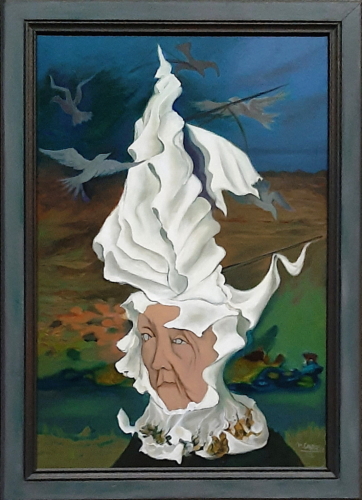
Photo©JanieC
Birds have played an important role in the life of Charles Carrère. During his youth he lived on the family farm in Anglet, close to the Butte aux Cailles. As a child, he was both horrified and fascinated by the women who plucked the birds. This is why he has never stopped wanting to bring them to life. He depicts them in an anthropomorphic profile and sometimes takes advantage of this to denounce human defects. In this way, he thinks he is restoring a certain justice.
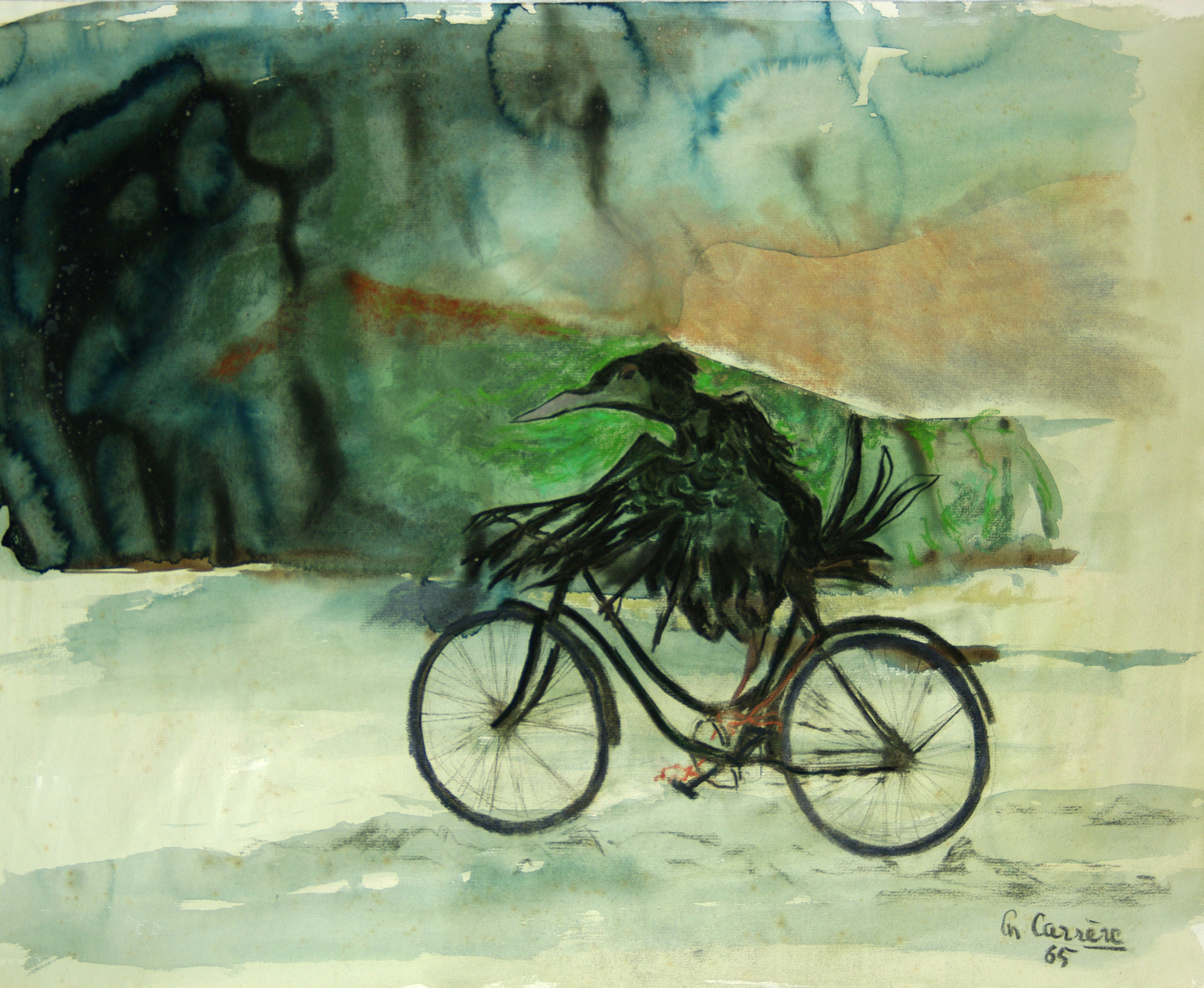
Photo©GilbertLassalle
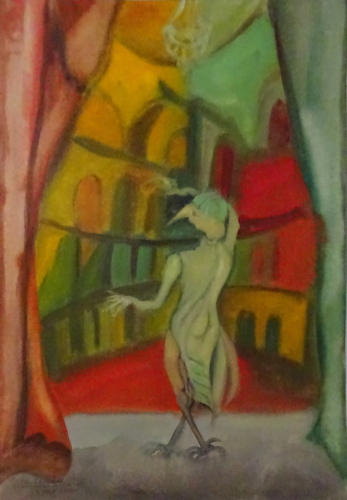
Photo©JanieC
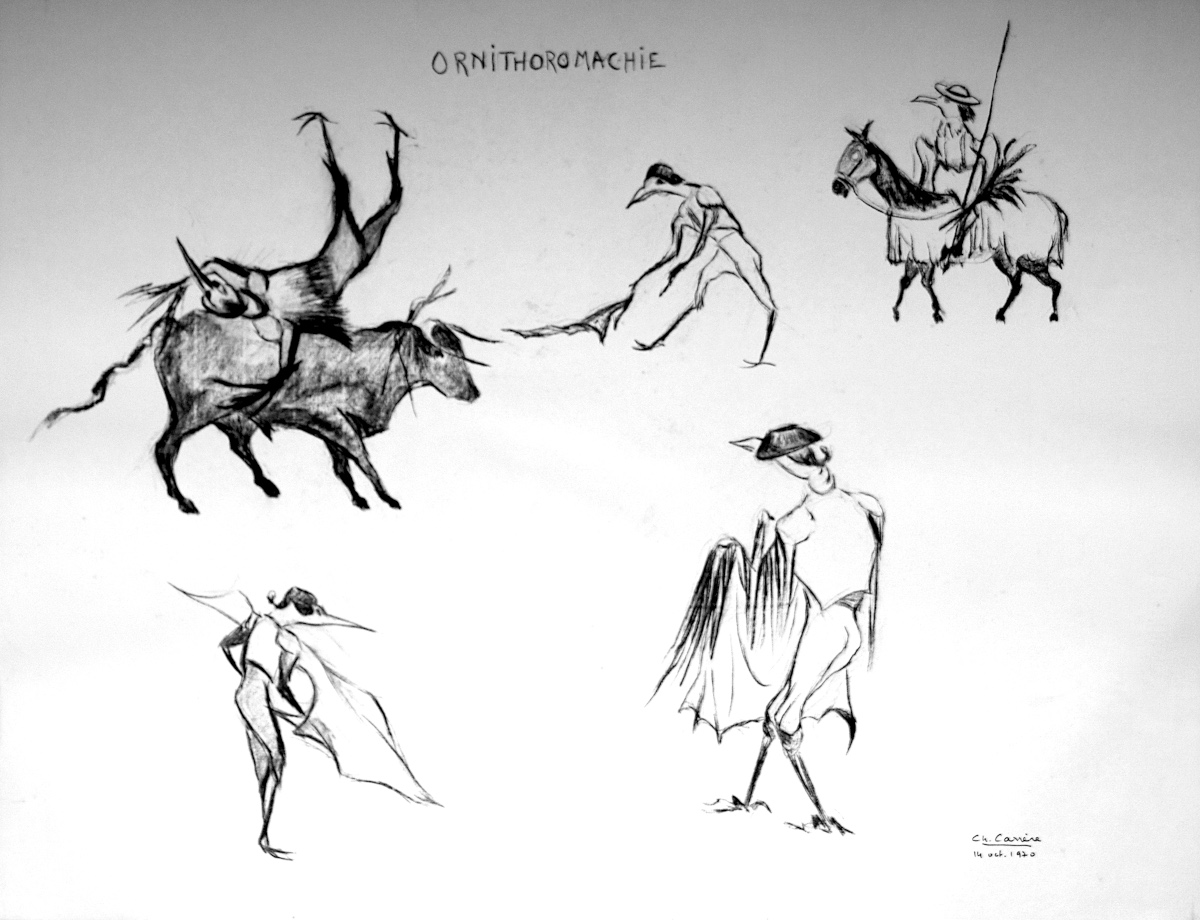
Photo©GilbertLassalle
The décor upstairs, where his artist’s studio is located, is made up of piles of objects. Tools from the Bellite farm are recovered and installed on the wall as a work of art.

Photo©JanieC
Other objects are found here and there or come from the family, such as the soup tureen that belonged to the artist’s grandmother and which Charles Carrère used for a charcoal drawing entitled “Querelle de cuisine”. The two skulls were also used as models for a work.
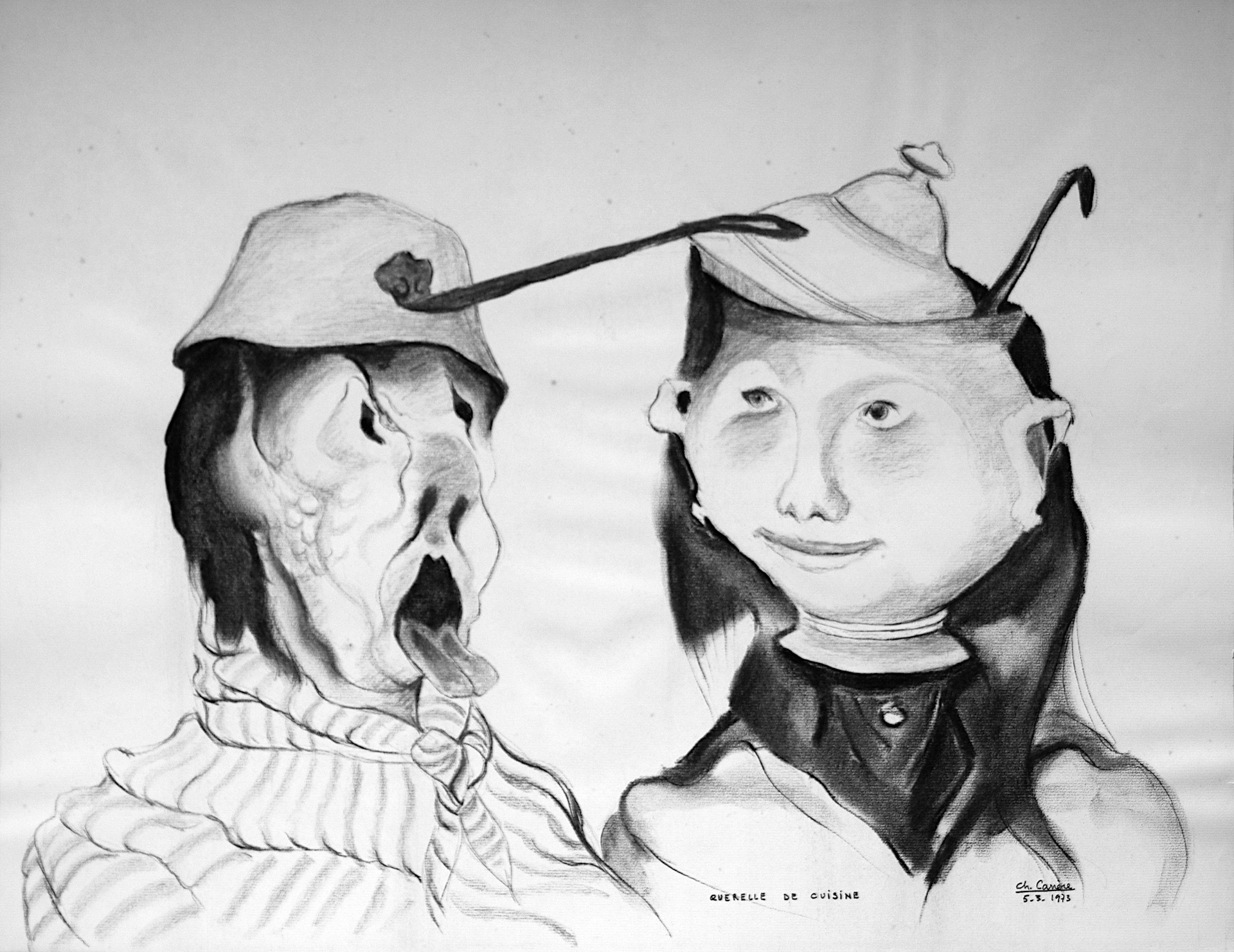
And this skull decorating a beam in his painter’s studio inspired Charles Carrère to paint a watercolour:

Photo©JanieC
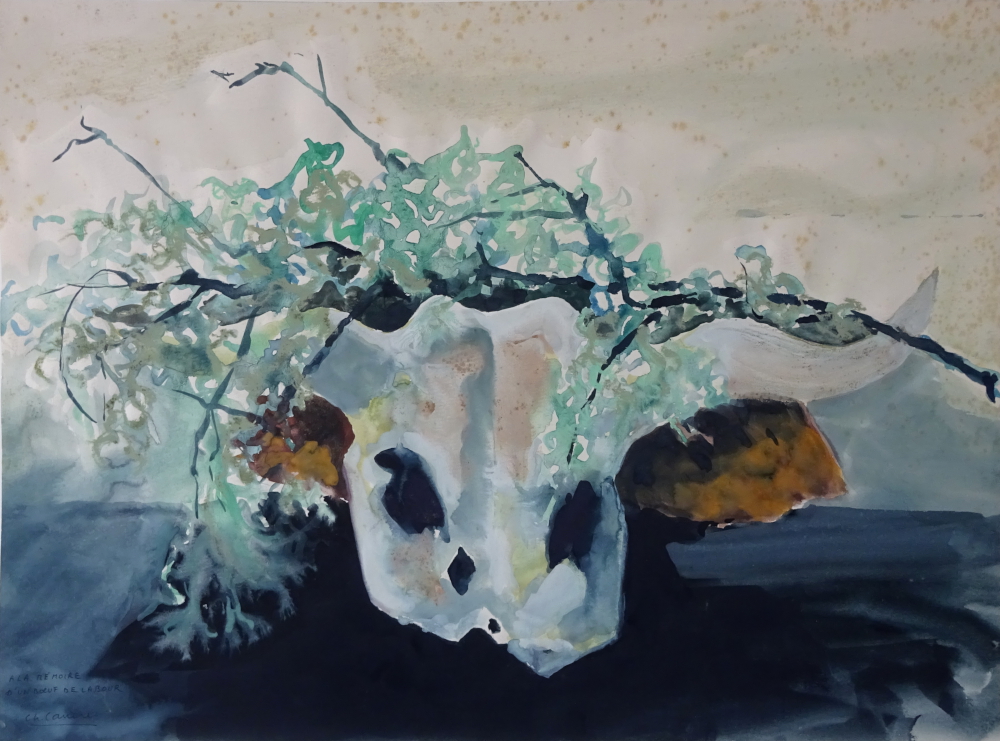
Photo©JanieC
Charles Carrère’s drawings are of great precision. Some charcoal drawings are catalogued by the artist as “Caprices”. Other ink drawings are done with a pen.
Charles Carrère separates his painted works : oils painting + watercolours. He uses all sorts of formats. His latest works are more often small formats.
Charles Carrère is constantly researching and experimenting. He likes to play with different techniques and test a theme in different ways.
The Focus page regularly offers articles with an analysis of a work. Stained glass, mosaics but also works by the artist.
Discover his drawings
Discover his paintings and watercolours
Discover plastic research
Back to home page
This post is also available in: French

